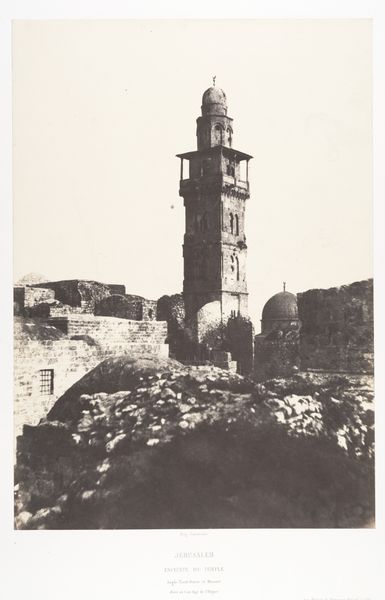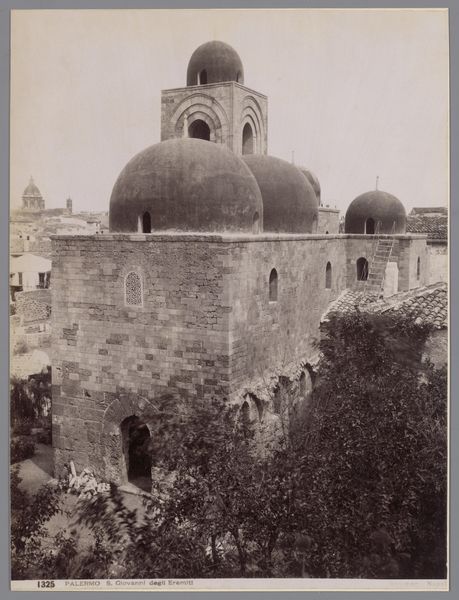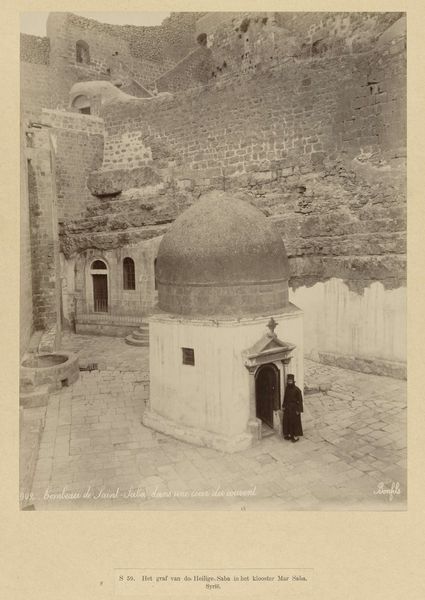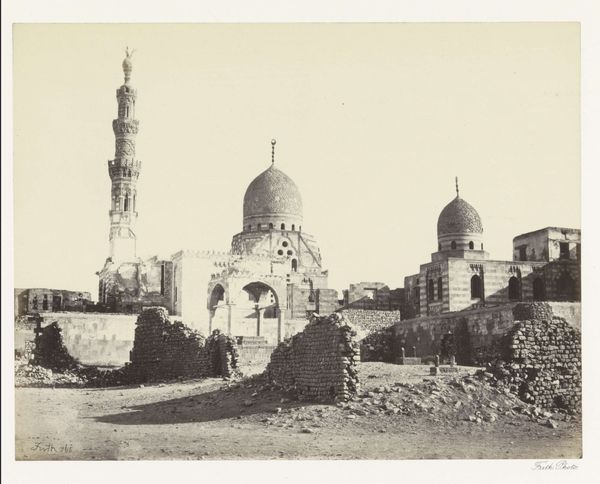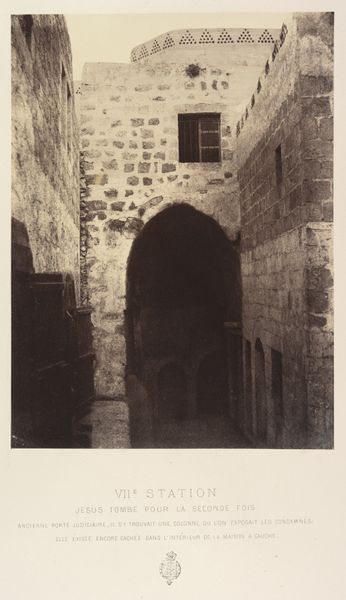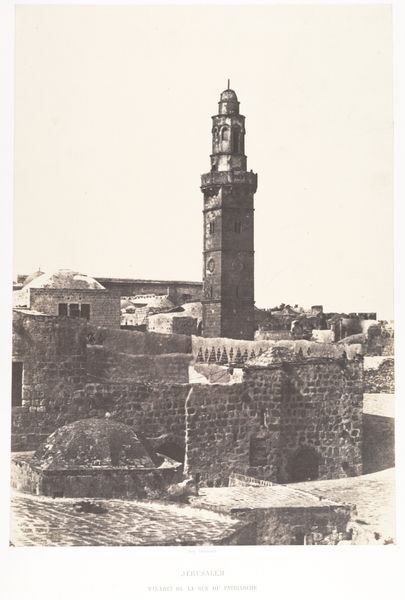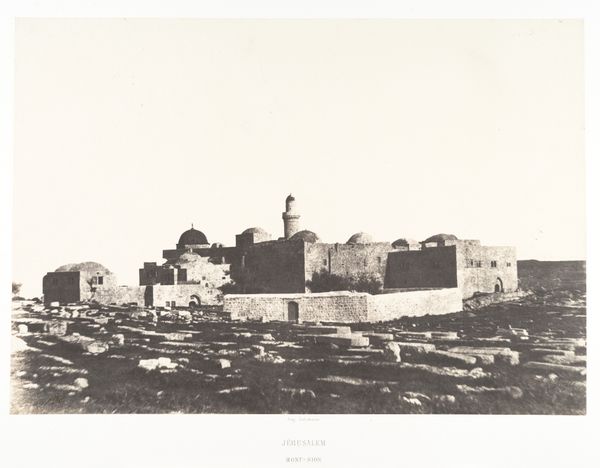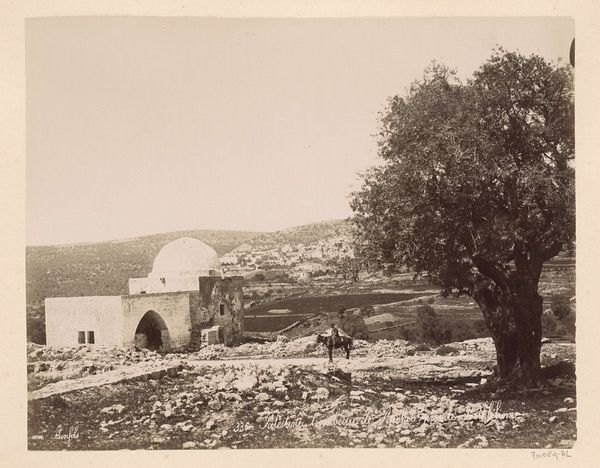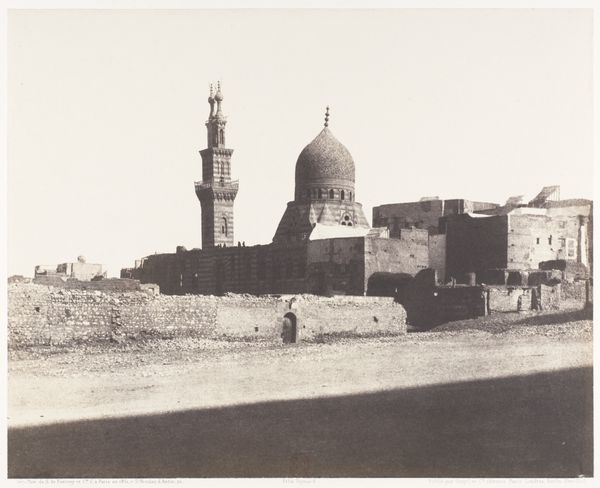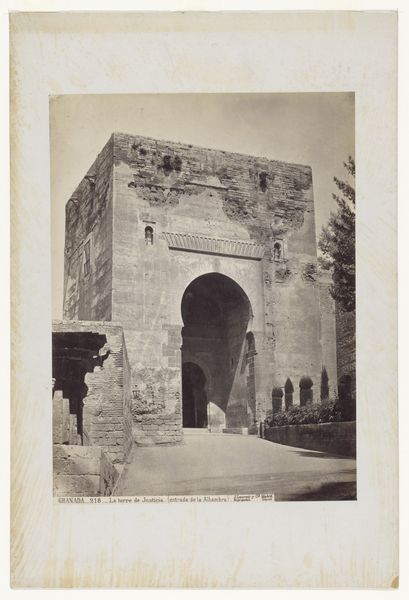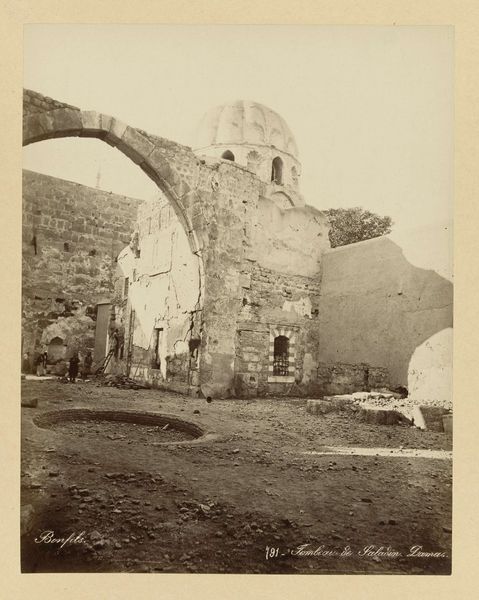
photography, site-specific, gelatin-silver-print
#
landscape
#
photography
#
orientalism
#
site-specific
#
gelatin-silver-print
#
islamic-art
Dimensions: height 110 mm, width 81 mm
Copyright: Rijks Museum: Open Domain
Curator: This photograph by Johannes Lodewijk Heldring, taken in 1898, captures the Nabi Yahya mosque in what was then Samaria. It’s a gelatin silver print, giving it that characteristic tonal range. Editor: Immediately, I'm struck by the stillness, that pervasive sepia tone almost bleaching out the image. There is a sense of timelessness here, perhaps a bit melancholic. Curator: Heldring certainly manipulates the light and shadow to accentuate the geometric forms: the dome, the minaret, those receding planes of the stone courtyard. See how the palm frond provides a softening counterpoint to all that strict geometry? Editor: Absolutely. And the palm frond introduces an exotic element, doesn't it? The Nabi Yahya mosque is traditionally believed to house the tomb of John the Baptist, and this adds another layer. It shows this convergence of religious significance: Islamic architecture erected upon layers of Christian and Jewish history. Curator: Notice, also, the composition is arranged with this wonderful play of positive and negative space. The solid forms of the buildings contrast against the sky, framing them quite distinctly. There's a real dedication to the plane here. Editor: Yes, and consider the deliberate contrast between the ruinous structure and the more intact mosque components. That ruinous state invites contemplation on time and empire, on how cultural symbols persist and transform. The symbols carry narratives of triumph, resilience, and change over time. Curator: Heldring’s sharp focus ensures that we note even the small details: the texture of the stone, the placement of windows and ornamentation. This speaks to a precision inherent in Orientalist photography of this era, concerned as it was with documenting specific structural forms. Editor: Perhaps. To me, it emphasizes how these locations become focal points in cross-cultural interaction. The architectural elements speak to the mosque as more than a structure, but a charged space of faith, history, and interaction across these traditions. Curator: It's an image that operates both as a document and as a finely constructed aesthetic object. Editor: I agree. It's a potent image—a seemingly simple scene loaded with so much complex cultural resonance.
Comments
No comments
Be the first to comment and join the conversation on the ultimate creative platform.
